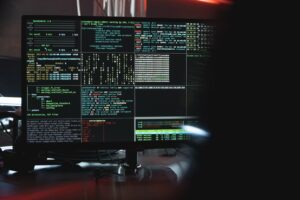Introduction
Hacking has come a long way since its inception. Once considered a curious exploration of computer systems, it has since evolved into a practical and potentially harmful crime. This blog post delves into the timeline of hacking, exploring when it transitioned from a mere curiosity to a significant criminal activity.
The Early Days: Hacking as Exploration
In the early years of computer technology, hacking was more about exploration and curiosity than criminal intent. Back in the 1960s and 1970s, when computers were in their infancy, enthusiastic individuals would delve into these machines to understand how they worked. They were often called “phreakers” or “phone phreaks,” as they explored the phone lines that connected early computer systems. Hacking, during this time, was largely seen as an intellectual challenge rather than a crime.
The 1980s: The Emergence of Malicious Intent
The 1980s marked a significant shift in the perception of hacking. It was during this decade that some hackers began to explore the limits of their abilities by breaching computer security systems without authorization. Some of these early hackers, like Kevin Mitnick, gained notoriety for their actions. Although their motives were not necessarily malicious, they were operating in a legal gray area, and their actions often caused disruptions.
The Morris Worm Incident (1988): A Watershed Moment
The year 1988 marked a significant turning point when hacking became a practical crime. This shift was exemplified by the Morris Worm incident. Robert Tappan Morris, a graduate student at Cornell University, released the Morris Worm, which inadvertently spread like wildfire, infecting thousands of computers and causing widespread damage. Morris’s actions were not driven by malicious intent, but the consequences of his experiment were far-reaching. This incident led to the Computer Fraud and Abuse Act (CFAA), one of the first major legislations aimed at combating computer crimes.
The 1990s: Hacking Goes Underground
The 1990s saw hacking becoming more sinister, with some individuals exploiting their skills for personal gain or to harm others. Hacker groups, like the Chaos Computer Club and the Legion of Doom, emerged, and the term “black hat hackers” came into use to describe those who used their skills for malicious purposes. The 1990s also witnessed the first instances of hacking for financial gain.
The New Millennium: Hacking Takes a Dark Turn
As we entered the new millennium, hacking began to evolve into a full-fledged criminal enterprise. Hacktivism and cyberattacks became more frequent, with groups like Anonymous making headlines. Cybercriminals started targeting financial institutions, stealing personal information, and causing financial havoc. The rise of ransomware attacks and data breaches further solidified hacking as a practical and profitable crime.
Conclusion: Hacking Today
In today’s world, hacking is a thriving criminal industry. Cybercriminals operate with increasing sophistication, causing financial and personal damage on a global scale. Cybersecurity is now a paramount concern for governments, businesses, and individuals.
Hacking may have started as a form of exploration and intellectual challenge, but it has undeniably evolved into a practical and harmful crime. The line between “white hat” and “black hat” hackers has become clearer, and the consequences of malicious hacking can be devastating. As technology continues to advance, our ability to secure our digital world becomes even more critical.


